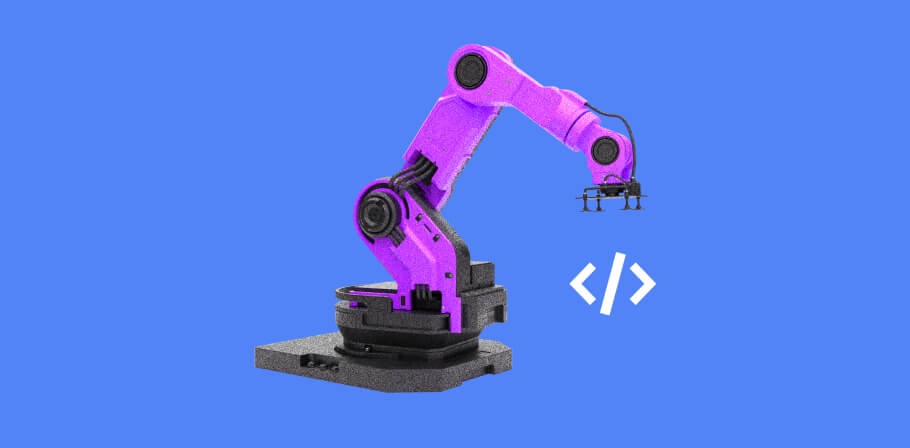As a senior QA engineer, you must have extensive experience in testing methodologies, strategies, and leadership skills to guide your team and land a greater QA engineer salary.
You may be asked senior QA engineer interview questions to assess your technical expertise, ability to develop a useful solution, and communication skills. To help you prepare, we have compiled a list of common senior QA interview questions and answers covering test automation, test planning, and team management.
Reviewing these interview questions for senior QA engineer job applications will help you gain confidence and demonstrate your qualifications.
ready for your next career move as a senior QA?
Let us do the work for you! Simply send us your CV, and our recruiters will match you with a perfect senior QA engineer position
1. What are the steps of the quality assurance life cycle?
For this question, the QA engineer interviewee can mention the steps, what they entail, and why each is important. The steps include:
- Requirements gathering
- Test planning
- Test execution
- Bug tracking
- Regression testing
- Release
The QA team develops test plans and strategies, creates test cases, executes tests, logs bugs, and performs regression testing. After all tests are passed the product is released to customers.
2. What is a requirements traceability matrix (RTM), and why use it?
A requirements traceability matrix (RTM) is a document that helps to trace the relationship between requirements and the test cases that verify those requirements. It is a table that maps the requirements of a project to the test cases that ensure each requirement has been fulfilled.
Using an RTM can provide several benefits to a software development project, such as:
- Ensure all requirements have been met and tested, reducing the risk of missing critical features or functions.
- Enable easy tracking and managing of requirements and test cases throughout the project lifecycle for all staff involved.
- Identify gaps or inconsistencies in the requirements, allowing for early detection and resolution of potential issues.
- Improve communication and collaboration between different teams working on the project to ensure everyone clearly understands the testing procedures and status.
Pro tip: Interviews may sometimes be in-depth regarding details, so we prepared a comprehensive technical interview questions guide to point you in the right direction.
3. How do you create a test script?
While it may seem simple or mundane, knowing how to create a test script is important when preparing to answer sr QA engineer interview questions. These are the steps:
- Test case identification: First, identify the test cases that need to be automated.
- Define the test steps: Once you have identified the test cases to automate, define the test script's steps.
- Determine the test data: Next, identify the data required to execute the test script.
- Record the test script: Use a tool or framework to record the steps of the test script, including the inputs and expected outputs.
- Add validations: Add validations to the test script to ensure that the expected results are achieved.
- Debugging and maintenance: Once the test script is recorded, it may need to be debugged and maintained over time.
Ensure that the script is appropriately documented and that it can be easily modified if necessary.
4. What are the best practices of security testing?
Some of the best practices for security testing include identifying and analyzing potential risks, implementing security measures early in the development cycle, using automated and manual testing methods, and regularly updating and re-evaluating security measures.
It is also essential to ensure that security testing is performed by experienced and qualified testers who are up to date on the latest security threats and testing techniques.
Finally, one should practice clear documentation and communication of security testing results and recommendations, which are essential for addressing vulnerabilities and ensuring the security of the system or application.
5. What would you do if you lacked documentation for testing purposes?
If documentation is lacking for testing purposes, the first step is communicating with the stakeholders and development team to gather as much information as possible.
It's important to prioritize the testing based on critical features and functionalities and focus on exploring the system to discover potential defects. Exploratory testing techniques can be helpful in such situations.
One should also document the testing process and results thoroughly to facilitate future testing and ensure traceability. Finally, report any issues or risks associated with the lack of documentation to the relevant stakeholders.
6. What are the key automation testing challenges?
Some key automation testing challenges you may face during your senior QA engineer career include:
- Test case selection
- Maintaining automation scripts
- Test environment setup
- Data management
- Test execution scheduling and management
- Reporting and analysis
- Test tool selection and integration
- Continuous integration and continuous testing
Other challenges include dealing with flaky tests, ensuring compatibility across different environments, and managing the automation testing framework.
7. How do you start quality assurance on a project?
To start quality assurance on a simple or advanced project, you should review the project requirements and create a test plan. The test plan should identify the test objectives, testing scope, testing resources, testing tools, and testing timelines.
You should then execute the test cases outlined in the plan, log any defects found, and track the progress of testing activities. It's important to communicate regularly with the development team and stakeholders to ensure that all parties know the testing progress and any issues found.
As testing progresses, you can adjust the test plan and test cases as needed to ensure that all aspects of the project are covered.
8. What is the difference between smoke testing and sanity testing?
Smoke testing is a preliminary level of testing to ensure that the critical functionalities of the software are working correctly. It is conducted to verify if the software is stable enough for further testing.
Sanity testing is a narrow and focused type of regression testing to ensure that the changes made to the codebase do not adversely affect the system's existing functionalities. It is performed to check if the bugs found in previous testing have been fixed and that no new bugs have been introduced.
9. Describe the bug cycle steps
As a candidate, you should have knowledge of the bug cycle, which typically follows these steps:
- Defect discovery: A defect is discovered during testing or by a customer.
- Defect reporting: The tester reports the defect along with a detailed description and steps to reproduce it.
- Defect prioritization: The defect is prioritized based on its severity and impact on the product.
- Defect assignment: The defect is assigned to a developer to investigate and fix.
- Defect fixing: The developer fixes the defect and verifies the fix.
- Defect verification: The tester verifies that the defect has been fixed and closes it if it has.
- Defect closure: The defect is closed after being fixed and verified.
10. What should a good test strategy include?
A good test strategy should include the following elements as part of the QA improvement process:
- Clear objectives and goals for testing
- Scope and coverage of testing
- Types of testing to be performed, such as functional, performance, or security
- Test environment requirements
- Test data requirements
- Test case design and execution approach
- Test automation approach
- Defect management and reporting processes
- Roles and responsibilities of the testing team
- Communication and collaboration channels with stakeholders
11. What’s the key principle of test-driven development?
Test-driven development (TDD) is a software development process that emphasizes writing automated tests before writing the actual code. The key principle of TDD is to write small, focused tests that specify the expected behavior of the code and then write the code to make those tests pass.
This approach helps ensure that the code is well-designed, maintainable, and meets the requirements of the business or user. TDD also promotes rapid feedback and reduces the likelihood of introducing bugs into the codebase.
12. Do you think QAs can also participate in resolving production issues?
Yes, QAs can and should participate in resolving production issues. Quality assurance professionals can bring a unique perspective to the problem-solving process as they deeply understand the system's functionality and how it is expected to behave.
In addition, they are skilled at identifying and replicating bugs and defects, which can be invaluable in identifying the root cause of a production issue.
By collaborating with developers and other stakeholders, QAs can help diagnose and resolve issues quickly, minimizing their impact on users and improving the system's overall quality.
Join EPAM Anywhere as a senior QA engineer
Discover the thrill of remote work as a QA engineer by joining EPAM Anywhere. As a remote QA engineer or QA analyst, you'll be free to work from your preferred location and craft a fulfilling career that complements your lifestyle.
Our QA professionals work on exciting projects using the latest manual testing frameworks and QA test automation tools. Collaborate with a global team of software development engineers, project managers, and product managers to develop digital products for the international market.
Landing one of our remote QA engineer jobs, you'll be part of an international community of QA professionals who share a passion for software development and professional advancement. Start your remote career journey with EPAM Anywhere today.

As Chief Editor, Darya works with our top technical and career experts at EPAM Anywhere to share their insights with our global audience. With 12+ years in digital communications, she’s happy to help job seekers make the best of remote work opportunities and build a fulfilling career in tech.
As Chief Editor, Darya works with our top technical and career experts at EPAM Anywhere to share their insights with our global audience. With 12+ years in digital communications, she’s happy to help job seekers make the best of remote work opportunities and build a fulfilling career in tech.
Explore our Editorial Policy to learn more about our standards for content creation.
read more
























